-
1 of 253523 objects
The Mosaic Egg and Surprise 1914
Gold, platinum, enamel, rose and brilliant diamonds, rubies, emeralds, topaz, quartz, sapphires, garnets, moonstone | 9.5 x 7.0 cm (whole object) | RCIN 9022
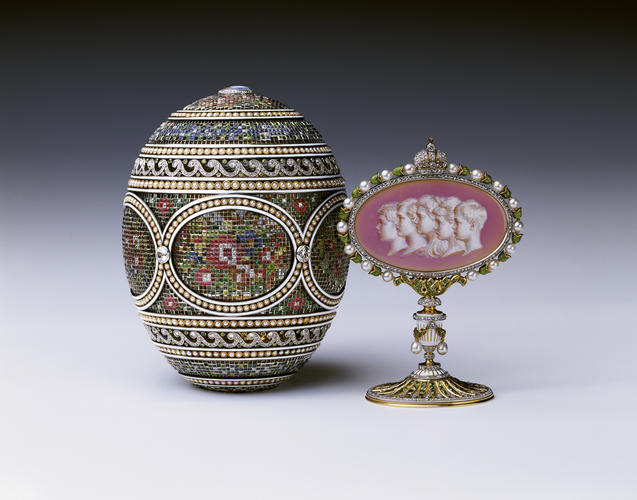
Albert Holmström (1876-1925)
Master: The Mosaic Egg and Surprise Item: Imperial Easter Egg 1914
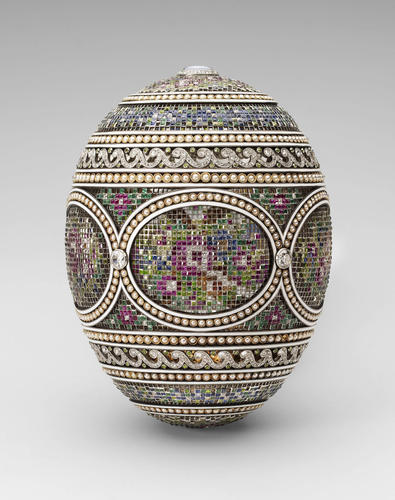
Albert Holmström (1876-1925)
The Mosaic Egg and Surprise 1914
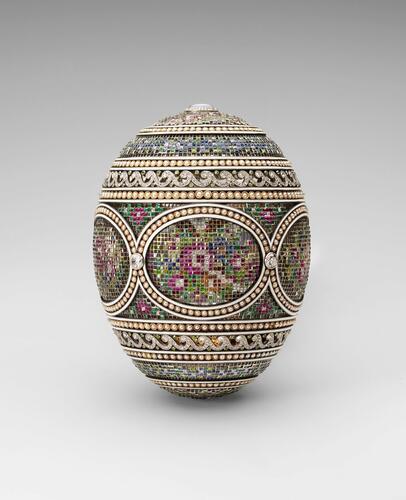
Albert Holmström (1876-1925)
Master: The Mosaic Egg and Surprise Item: Imperial Easter Egg 1914
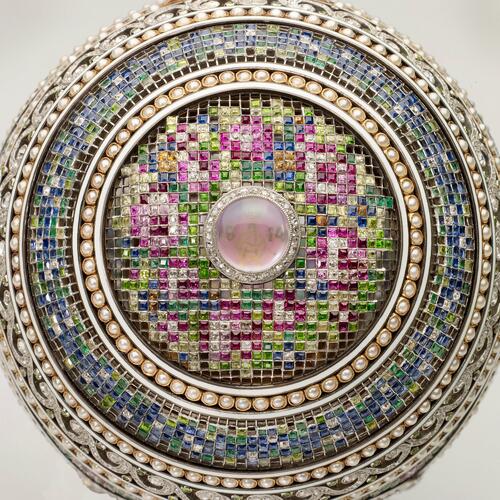
Albert Holmström (1876-1925)
Master: The Mosaic Egg and Surprise Item: Imperial Easter Egg 1914

Albert Holmström (1876-1925)
Master: The Mosaic Egg and Surprise Item: Imperial Easter Egg 1914
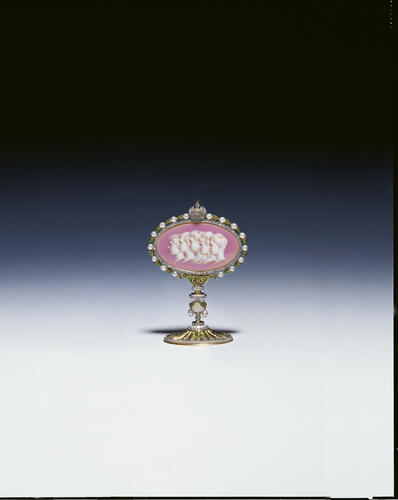
Albert Holmström (1876-1925)
Master: The Mosaic Egg and Surprise Item: Imperial Easter Egg 1914
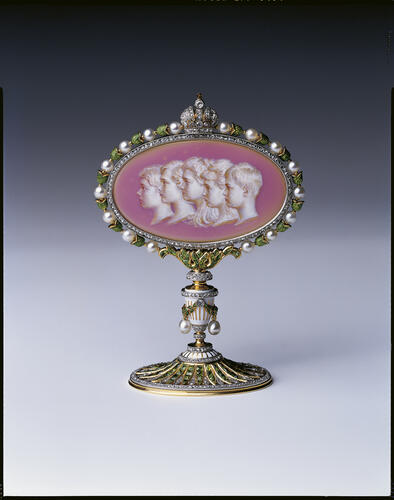
Albert Holmström (1876-1925)
Master: The Mosaic Egg and Surprise Item: Imperial Easter Egg 1914




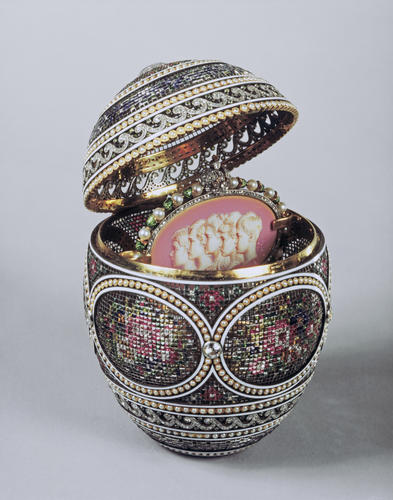




-
Imperial Easter egg with an overall mosaic pattern, made from gold and platinum, pink and white enamel set with rose diamonds, rubies, emeralds, topaz, sapphires and garnets. Borders of pearls and larger diamonds. Moonstone finial with Tsarina's initials. The egg contains an oval surprise with sepia profiles of the five Imperial children.
Technically one of the most sophisticated and extraordinary of Fabergé’s Imperial Easter Eggs, the Mosaic Egg retains its ‘surprise’. It takes the form of a medallion painted on ivory with the portraits of the five children of Tsar Nicholas II and Tsarina Alexandra on one side and a basket of flowers and their names on the other, on a stand surmounted by the Russian imperial crown, held within the egg by gold clips.
The egg was the Tsar’s Easter gift to his wife in 1914, but the original invoice was destroyed and the cost is therefore unknown. The Tsarina’s monogram and the date 1914 are set beneath a moonstone at the apex of the egg. It comprises a platinum mesh into which tiny diamonds, rubies, topaz, sapphires, demantoid garnets, pearls and emeralds are fitted – perfectly cut, polished and calibrated to fill the spaces.This extraordinary technical feat is all the more impressive because the platinum is not welded but cut.The five oval panels around the centre of the egg feature a stylised floral motif, replicating the technique of petit-point.
In the list of confiscated treasures transferred from the Anichkov Palace to the Sovnarkom in 1922, the egg is described thus: ‘1 gold egg as though embroidered on canvas’. The designer, Alma Theresia Pihl, was inspired to produce the needlework motif when watching her mother-in-law working at her embroidery by the fire. Alma Pihl came from a distinguished family of Finnish jewellers employed by Fabergé. Her uncle, Albert Holmström, took over his father August’s workshop and was the workmaster responsible for the production of this bejewelled egg. The egg was confiscated in 1917 and sold by the Antikvariat in 1933 for 5,000 roubles. It was purchased by King George V from Cameo Corner, London, on 22 May 1933 for £250 ‘half-cost’, probably for Queen Mary’s birthday on 26 May.
Engraved on the egg C. Fabergé Engraved on the pedestal of the surprise G. Fabergé
Text adapted from Fabergé in the Royal CollectionProvenance
Commissioned by Tsar Nicholas II for Tsarina Alexandra Feodorovna, Easter 1914; confiscated by the provisional government, 1917; sold by the Antikvariat, 1933 (5,000 roubles), probably to Armand Hammer.
Purchased by King George V from Cameo Corner, 22 May 1933, (£250), probably for Queen Mary's birthday, 26 May. -
Creator(s)
(workmaster)(jeweller)Acquirer(s)
Commissioner(s)
Subject(s)
-
Medium and techniques
Gold, platinum, enamel, rose and brilliant diamonds, rubies, emeralds, topaz, quartz, sapphires, garnets, moonstone
gold, platinum, pearl, green enamel, white enamel, pink enamel, diamond, sepia ink, ruby, enamel, sapphire, emerald, topaz, quartz, garnet, moonstoneMeasurements
9.5 x 7.0 cm (whole object)
Category
Object type(s)
Alternative title(s)
Imperial Easter Egg